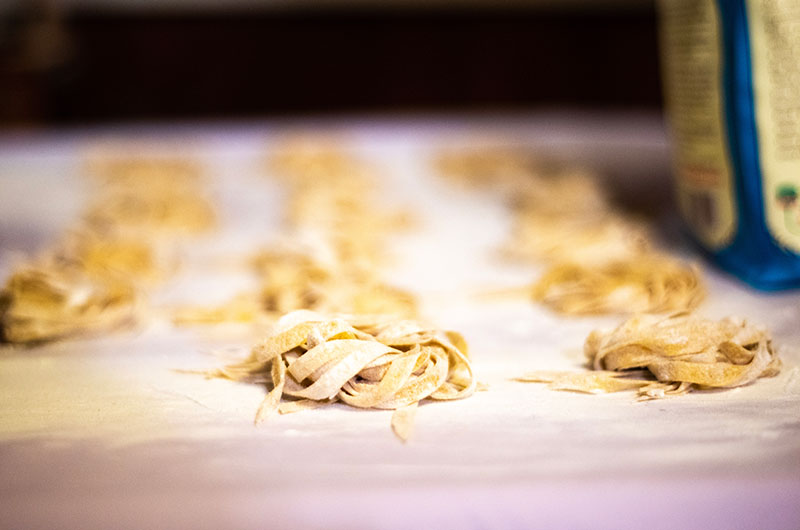This recipe would be a perfect one to make over the quiet holidays this year. If you’ve never made homemade pasta, don’t worry – it’s just dough! Set aside a little time and have fun with it. It’s nice to have another member of your household helping, but not essential. (Before you start the recipe, be sure to take a look at the sequence of process photos below the recipe directions.)
A pasta machine (either hand-cranked or electric) does certainly make things easier, but it is possible to make fresh pasta without one. I’ve included directions for both ways. Some tools you will want to have include a very large mixing bowl (wide and slope-sided, not too deep), a fork, a rolling pin, a sharp knife and towels or bed sheets. Plenty of counter space is helpful, too!
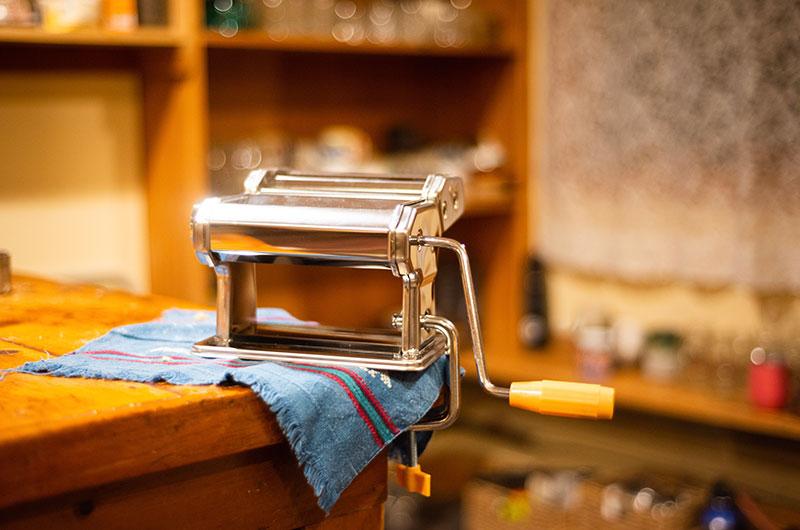
A couple notes: How much olive oil you’ll need to add to the dough will vary depending on the season and the humidity (or dryness, especially this time of year) in the environment. I’ve made this recipe many times and have used almost no oil up to a quarter cup, depending on the weather.
Once you’ve made the pasta, you’ll want to cook some that day as there is nothing like fresh pasta. It will cook very quickly when it is fresh. Dress it simply with butter, parmigiano and garlic, or however you like, but sauce it lightly. (Or try this recipe for pasta with roasted cherry tomatoes and spicy garlic oil.) Homemade fresh pasta is more filling than dried pasta, so plan your portions accordingly.
The remaining pasta should be dried at room temperature for 3 to 7 days. Or it can be wrapped in small portions and stored in the freezer for several weeks.
If you want to have some fun, use food coloring to tie-dye the dough in between rolling it out. Kids love getting involved in this.
Makes 4 to 6 servings
- 2 cups all-purpose flour, plus 1 to 2 cups more for drying
- 1 cup whole wheat flour
- Pinch of salt
- 4 large eggs
- 1 tablespoon extra-virgin olive oil (or as needed)
1. In your largest mixing bowl, whisk together the two cups all-purpose flour, the one cup whole wheat flour, and the pinch of salt.
2. Make a hole (or well) in the center of the dry mixture and add your eggs and half of the oil into that hole.
3. With the fork, slowly scramble the eggs in the hole, gradually moving from the center out to the sides. The eggs will begin to grab the flour, and as you move outwards, all of the flour will be incorporated. If the mixture seems too dry, add the remainder of the oil and more if needed. (Add oil in small amounts)
4. Knead the dough by hand for 7 to 9 minutes, creating a ball.
5. Let the dough rest for 30 minutes at room temperature.
6. Follow directions below to shape the pasta by hand or by pasta machine.
To shape the pasta by hand:
- Cut the dough ball into four to six sections.
- Take one section and mold it into a flat pancake shape.
- Sprinkle the counter and the rolling pin with flour.
- Begin rolling out the dough, adding more flour as the dough sticks to the rolling pin or counter, until it reaches a long, thin oblong shape. It should be thin enough that you can see light through it. The piece will be between 14 and 18 inches long.
- Sprinkle flour on both sides of the flat dough sheet.
- Very gently, fold or loosely roll the dough sheet onto itself until it is about 4 inches wide.
- Cut crosswise into thin ¼-inch strips with your sharp knife.
- Unroll the pasta strands and dust with more flour.
- On towels or bed sheets sprinkled with flour, lay the pasta out flat or curl into nests.
- Dry the pasta for three to seven days (depending on room moisture) or wrap and freeze small portions.
- Repeat steps until all the dough has been used.
To shape the pasta by machine (see photos below):
- Cut the dough ball into four to six sections.
- Take one section and mold it into a flat pancake shape.
- Sprinkle the pasta machine with flour.
- On the widest setting, feed the dough through the pasta machine rollers. A second set of hands is helpful here; one person can crank the pasta machine as the other feeds the dough through the rollers.
- Repeat feeding the dough through the rollers from the widest setting to the thinnest.
- Dust the dough intermittently with flour to prevent tearing.
- Once the dough is thin, feed it through the cutting roller.
- Unroll pasta strands and dust with more flour.
- On towels or bed sheets sprinkled with flour, lay the pasta out flat or curl into nests.
- Dry the pasta for three to seven days (depending on room moisture) or wrap and freeze small portions.
- Repeat steps until all the dough has been used.
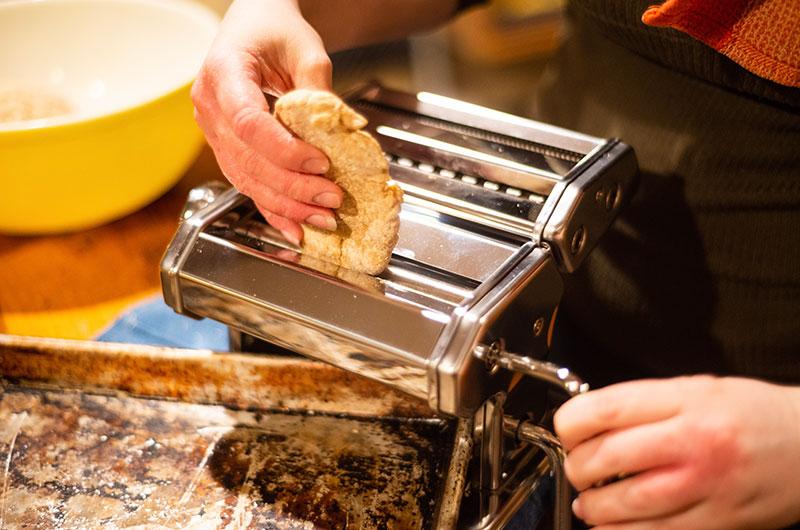
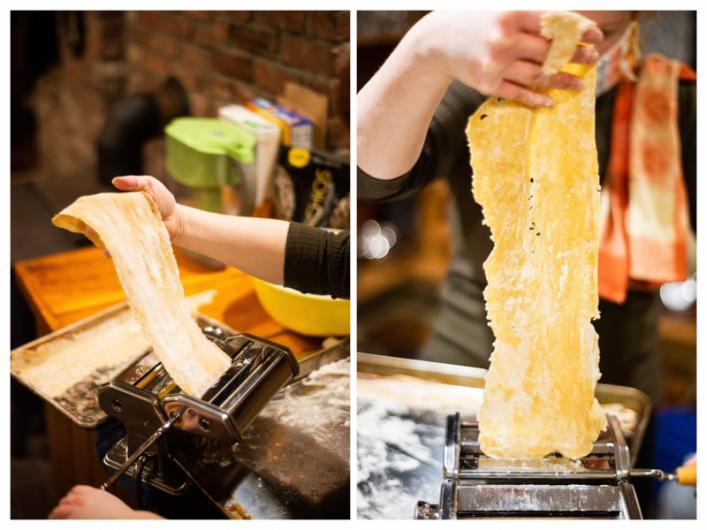
*
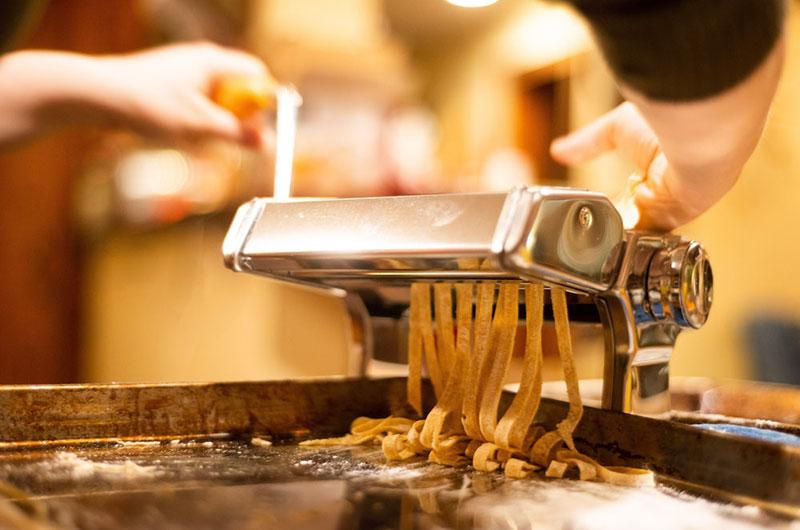
*
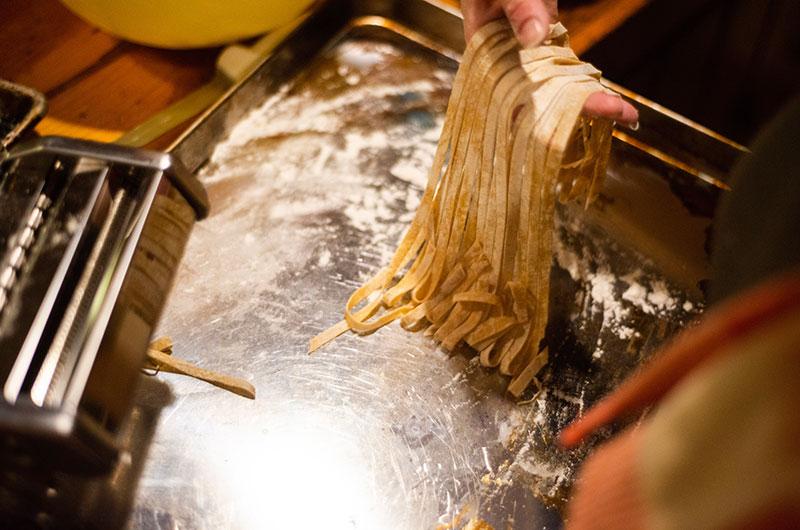
*
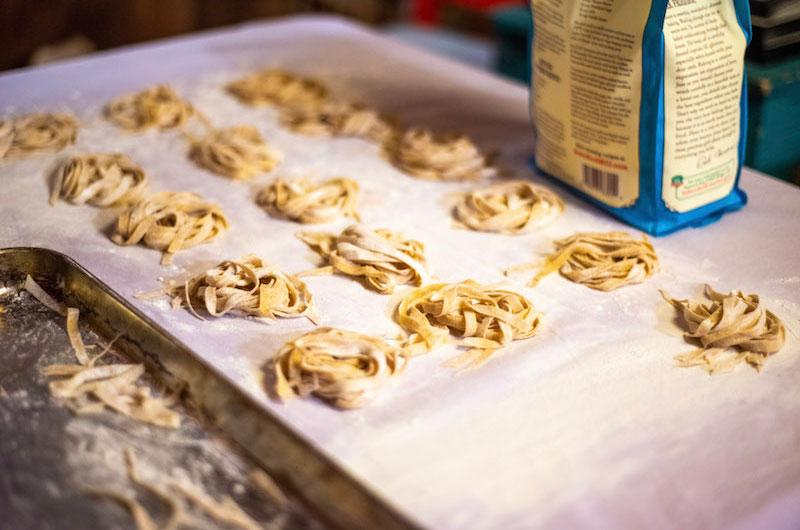
*
*

